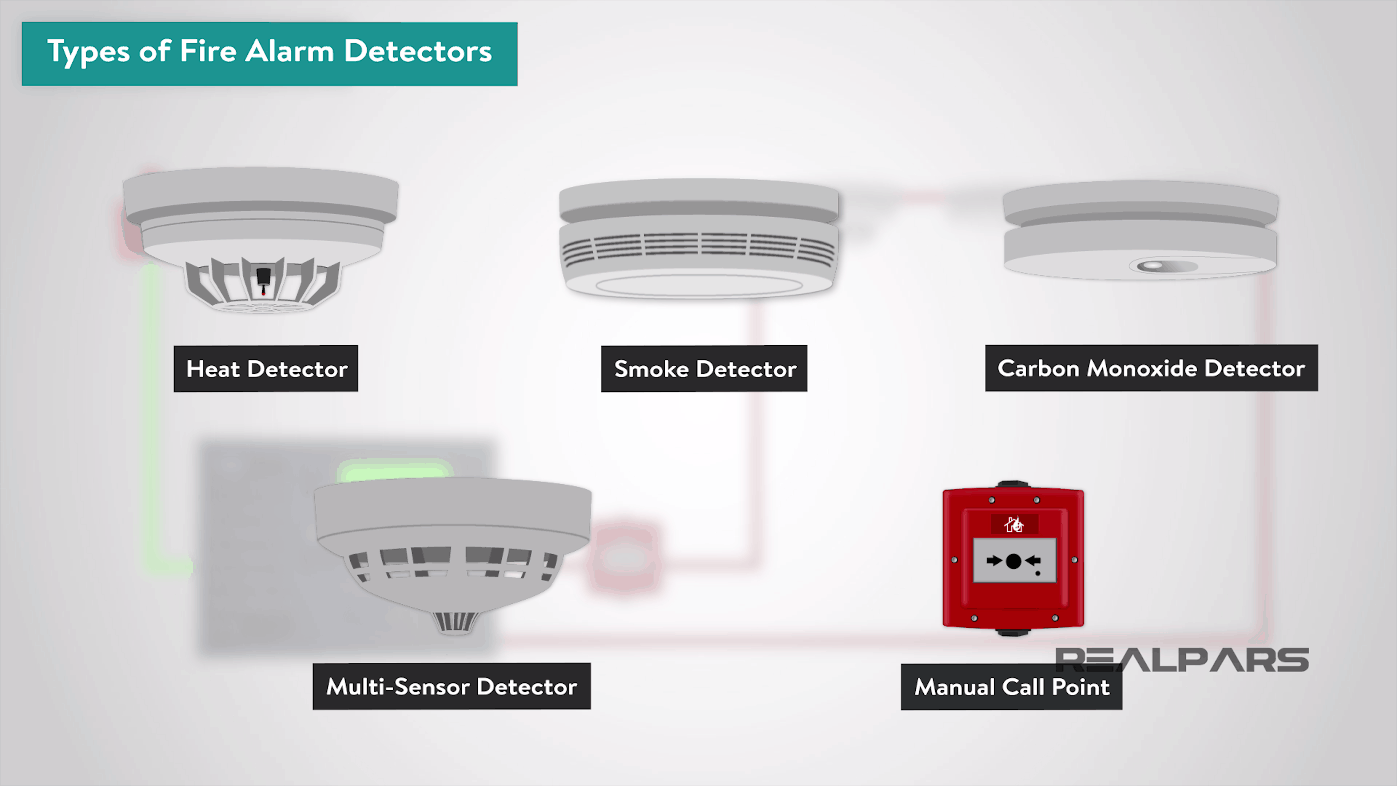Fire Alarm System All Type Of Detector's
In a fire alarm system, various types of detectors are used to sense the presence of smoke, heat, or flames. These detectors play a crucial role in quickly identifying potential fire hazards and initiating the necessary alarms. Here are some common types of fire detectors:
-
Smoke Detectors:
- Ionization Smoke Detectors: These detectors use ionization chambers to detect small particles produced by combustion. They are sensitive to fast-burning, flaming fires.
- Photoelectric Smoke Detectors: These detectors use light beams to detect smoke particles. They are more responsive to slow-burning, smoldering fires.
-
Heat Detectors:
- Fixed Temperature Heat Detectors: These detectors activate when the temperature in a specific location exceeds a predetermined threshold.
- Rate-of-Rise Heat Detectors: These detectors respond to a rapid increase in temperature within a short period, indicating the presence of a fire.
-
Flame Detectors:
- Ultraviolet (UV) Flame Detectors: These detectors respond to the ultraviolet radiation emitted by flames.
- Infrared (IR) Flame Detectors: These detectors sense infrared radiation emitted by flames, providing another method for flame detection.
-
Gas Detectors:
- Combustible Gas Detectors: These detectors sense the presence of potentially combustible gases in the air, providing an early warning of a potential fire hazard.
-
Multi-Sensor Detectors:
- Combination Detectors: Some detectors combine multiple sensing technologies, such as smoke and heat detection, to enhance accuracy and reduce false alarms.
-
Aspirating Smoke Detection:
- These systems use a network of pipes to actively draw air samples from a protected area through a detector. They are highly sensitive and suitable for early detection in critical environments.
-
Beam Detectors:
- These detectors use a projected beam of light to detect smoke particles. They are often used in large open spaces such as warehouses.
-
Air Sampling Smoke Detectors:
- Similar to aspirating smoke detection, these detectors actively sample air for the presence of smoke particles. They are suitable for early detection in sensitive environments.
It's important to note that the selection of detectors depends on the specific characteristics of the environment and the type of fire hazards expected. The combination of different types of detectors in a fire alarm system helps ensure comprehensive coverage and early detection. Regular maintenance and testing of detectors are essential to ensure their proper functioning. Additionally, local building codes and regulations should be followed when designing and installing fire alarm systems.

